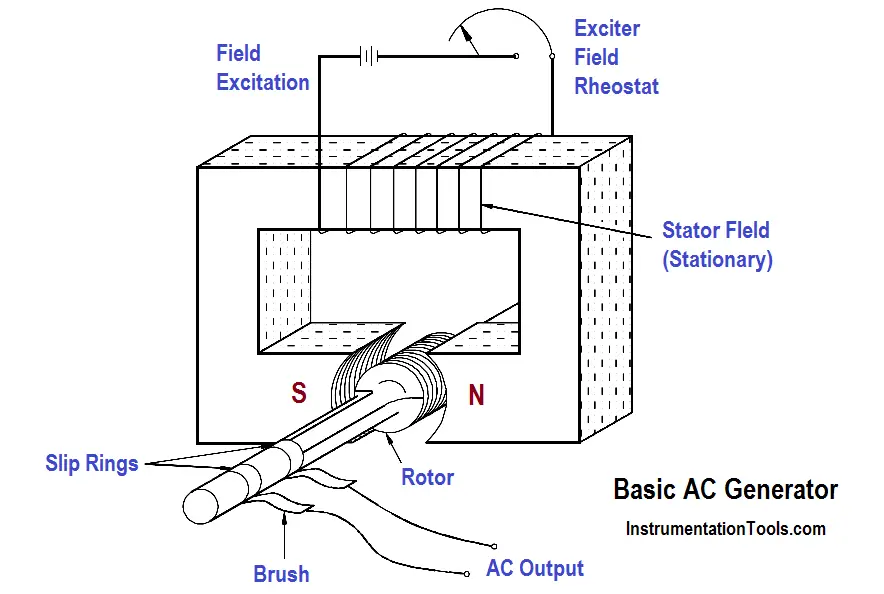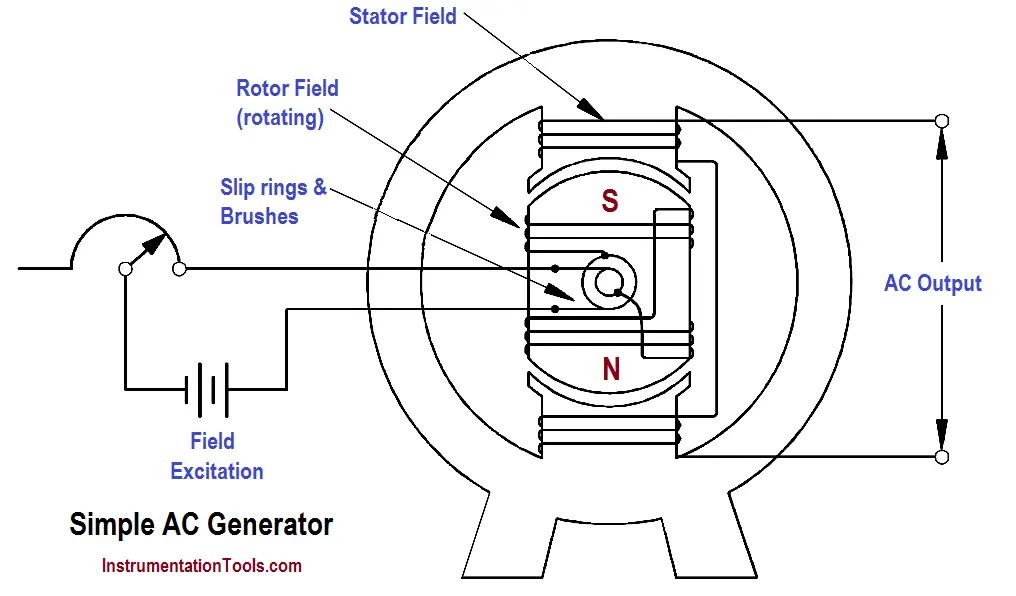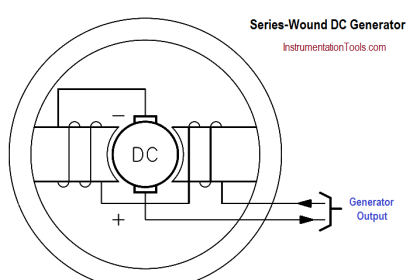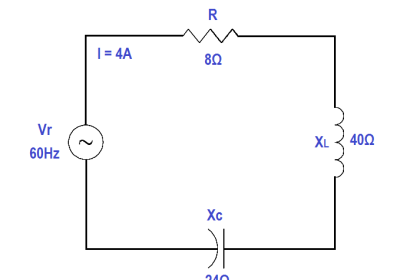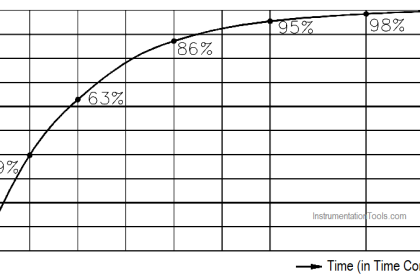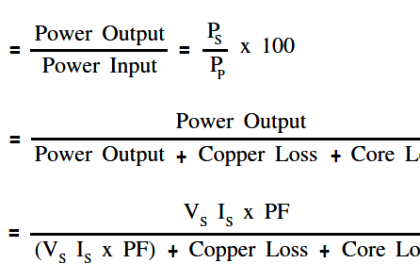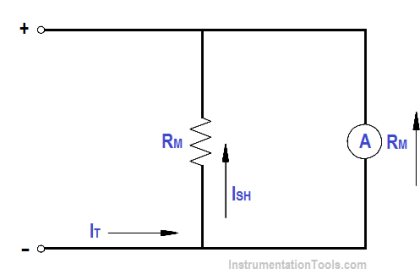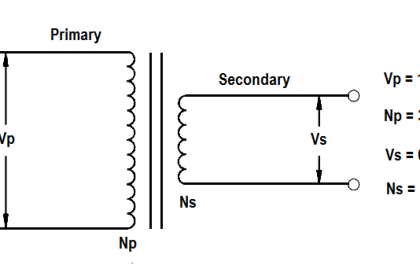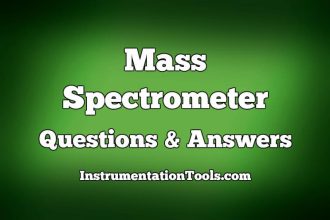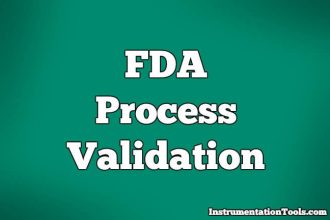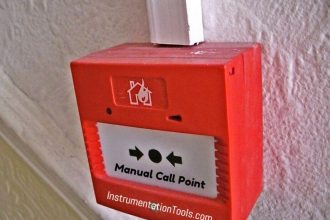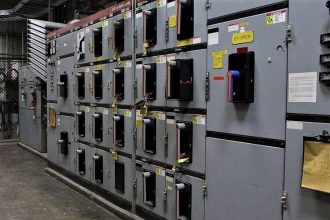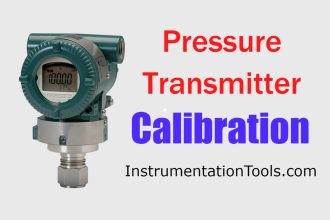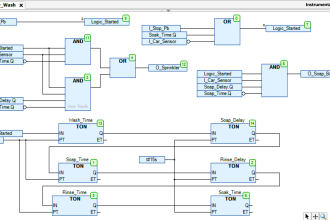As previously discussed, there are two types of AC generators: the stationary field, rotating armature; and the rotating field, stationary armature.
Small AC generators usually have a stationary field and a rotating armature (below Figure). One important disadvantage to this arrangement is that the slip-ring and brush assembly is in series with the load circuits and, because of worn or dirty components, may interrupt the flow of current.
Figure : Stationary Field, Rotating Armature AC Generator
If DC field excitation is connected to the rotor, the stationary coils will have AC induced into them (Below Figure ). This arrangement is called a rotating field, stationary armature AC generator.
Figure : Simple AC Generator – Rotating Field, Stationary Armature
The rotating field, stationary armature type AC generator is used when large power generation is involved. In this type of generator, a DC source is supplied to the rotating field coils, which produces a magnetic field around the rotating element. As the rotor is turned by the prime mover, the field will cut the conductors of the stationary armature, and an EMF will be induced into the armature windings.
This type of AC generator has several advantages over the stationary field, rotating armature AC generator:
(1) a load can be connected to the armature without moving contacts in the circuit;
(2) it is much easier to insulate stator fields than rotating fields; and
(3) much higher voltages and currents can be generated.
